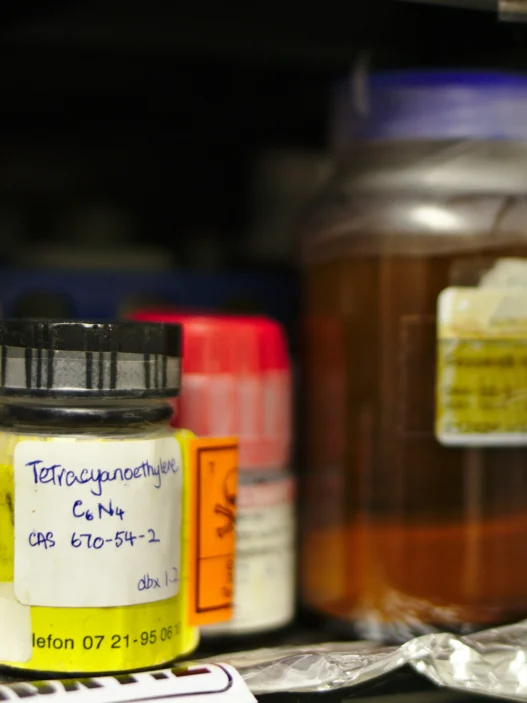4-Chlorobenzophenone, a chemical compound commonly used in the production of sunscreen and various pharmaceuticals, plays a significant role in everyday life. As a key ingredient in sunscreen formulations, it helps to protect our skin from harmful UV rays and reduce the risk of skin cancer. Additionally, 4-Chlorobenzophenone is utilized in the manufacturing of medications to treat various illnesses and conditions, demonstrating its importance in the healthcare industry. Overall, the compound’s versatile applications make it an essential component in many products that contribute to our health and well-being.
Table of Contents:
- 💡 Commercial Applications
- ⚗️ Chemical & Physical Properties
- 🏭 Production & Procurement
- ⚠️ Safety Considerations
- 🔬 Potential Research Directions
- 🧪 Related Compounds
💡 Commercial Applications
4-Chlorobenzophenone, also known as 4-chlorodiphenyl ketone, is a chemical compound commonly used in commercial and industrial applications. It is primarily employed as an intermediate in the synthesis of various pharmaceuticals, agrochemicals, and specialty chemicals. Additionally, 4-Chlorobenzophenone is utilized as an ultraviolet (UV) absorber in plastics and polymer manufacturing.
In the pharmaceutical industry, 4-Chlorobenzophenone is utilized as a building block in the synthesis of various drugs and medications. It is often used as a key intermediate in the preparation of antidepressants, antihistamines, and anti-inflammatory agents. Furthermore, 4-Chlorobenzophenone plays a crucial role in the development of certain anticancer drugs and treatments for neurological disorders.
Overall, the diverse chemical properties of 4-Chlorobenzophenone make it a valuable compound in both commercial and industrial settings. Its versatility in drug synthesis and UV protection applications highlight its significance in various sectors of the chemical industry.
⚗️ Chemical & Physical Properties
4-Chlorobenzophenone is a white crystalline solid with a faint aromatic odor. It is commonly used in the synthesis of various organic compounds due to its reactivity and stability.
The molar mass of 4-Chlorobenzophenone is 216.65 g/mol, and its density is 1.290 g/cm³. Compared to common food items like sugar and salt, which have lower molar masses and densities, 4-Chlorobenzophenone is relatively heavier and denser.
The melting point of 4-Chlorobenzophenone is around 72-74°C, while its boiling point is approximately 306-308°C. In contrast, common food items like butter and chocolate have lower melting points and boiling points, making 4-Chlorobenzophenone more stable at higher temperatures.
4-Chlorobenzophenone is sparingly soluble in water and has a low viscosity. Compared to common food items like sugar and salt, which are highly soluble in water and have varying viscosities, 4-Chlorobenzophenone exhibits different solubility and viscosity properties in aqueous solutions.
🏭 Production & Procurement
4-Chlorobenzophenone is typically produced through the Friedel-Crafts acylation reaction, in which benzoyl chloride is reacted with chlorobenzene in the presence of a Lewis acid catalyst, such as aluminum chloride. This reaction leads to the formation of 4-Chlorobenzophenone as the desired product.
4-Chlorobenzophenone can be procured from various chemical suppliers that specialize in the manufacture and distribution of fine chemicals. The compound is typically available in solid form, as a white to off-white crystalline powder. Once procured, 4-Chlorobenzophenone can be transported in airtight containers to prevent contamination and degradation during transit.
The transportation of 4-Chlorobenzophenone is typically carried out using standard protocols for the shipment of hazardous chemicals. These protocols may include the use of specialized packaging, labeling, and handling procedures to ensure the safe transport of the compound. Additionally, proper documentation and compliance with regulations governing the transportation of hazardous materials are essential to prevent accidents and ensure regulatory compliance.
⚠️ Safety Considerations
Safety considerations for 4-Chlorobenzophenone include the potential for skin and eye irritation upon contact. It is important to handle this chemical with caution, using appropriate personal protective equipment such as gloves, goggles, and lab coats. Additionally, it is recommended to work with 4-Chlorobenzophenone in a well-ventilated area to minimize exposure through inhalation.
Hazard statements for 4-Chlorobenzophenone include “Causes skin irritation” and “Causes serious eye irritation.” These statements indicate the potential risks associated with contact with this chemical, emphasizing the importance of taking precautions to avoid skin and eye exposure. It is crucial to handle 4-Chlorobenzophenone with care and follow proper safety protocols to prevent any adverse health effects.
Precautionary statements for 4-Chlorobenzophenone include “Wear protective gloves/protective clothing/eye protection/face protection” and “IF IN EYES: Rinse cautiously with water for several minutes. Remove contact lenses, if present and easy to do.” These statements highlight the necessary safety measures to be taken when working with 4-Chlorobenzophenone to minimize the potential for skin and eye irritation. It is important to follow these precautionary statements to ensure safe handling of this chemical.
🔬 Potential Research Directions
Research on 4-Chlorobenzophenone may explore its potential applications in various industries, including pharmaceuticals, agrochemicals, and cosmetics. Studies could focus on understanding its potential as a building block for synthesizing novel organic compounds with desired properties.
Furthermore, investigations could delve into the environmental implications of 4-Chlorobenzophenone, such as its persistence in the environment and potential toxicity to aquatic organisms. Research could also aim to develop sustainable methods for the synthesis and disposal of this compound to mitigate any adverse impacts on the environment.
Another potential research direction could involve elucidating the mechanisms of action of 4-Chlorobenzophenone in biological systems. This could include studying its interactions with proteins, enzymes, or other biomolecules to uncover potential pharmacological or biochemical activities that could be harnessed for therapeutic purposes.
Additionally, research may focus on optimizing the synthesis of 4-Chlorobenzophenone and exploring novel synthetic routes to improve efficiency and yield. This could involve the development of new catalytic systems or reaction conditions to streamline the production process and reduce waste generation.
🧪 Related Compounds
One similar compound to 4-Chlorobenzophenone is 4-Bromobenzophenone. This compound has a similar molecular structure to 4-Chlorobenzophenone, with a bromine atom replacing the chlorine atom in the para position. It is commonly used in organic synthesis and as a building block in the production of pharmaceuticals and agrochemicals.
Another analogous compound is 4-Fluorobenzophenone. Like 4-Chlorobenzophenone, this compound contains a benzophenone core with a halogen atom in the para position. The fluorine atom in 4-Fluorobenzophenone provides unique properties and chemical reactivity that make it useful in various applications, including in the pharmaceutical industry and as a starting material for the synthesis of other organic compounds.
4-Iodobenzophenone is yet another compound with a molecular structure akin to 4-Chlorobenzophenone. In this compound, an iodine atom replaces the chlorine atom in the para position of the benzophenone core. 4-Iodobenzophenone is a versatile building block in organic synthesis, particularly in the preparation of biologically active compounds and materials with specific electronic properties.





